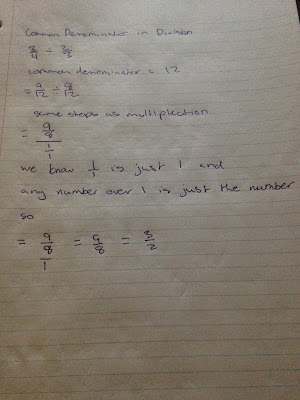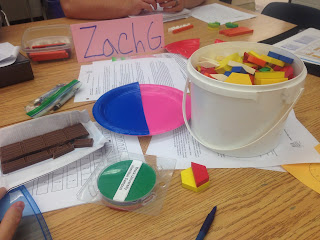Well, this is the end, Math class has come to an end yet I
feel I have only unlocked a fraction of my knowledge (see what I did there).
What I mean by this is that I am looking to gain more knowledge through my
experiences as teacher. So far, I have learned so many new techniques that I
can translate into my class. I can’t stress enough the ability to differentiate
instruction and adapt to your students. Unfortunately, a lot of teachers still
follow their old-fashioned ways. Just this week I was discussing a situation
that happened with a student my associate teacher knows. The teacher, of 20-30
years refused to allow a student to use scrap paper on a multiple choice
advanced functions test. The student was
better at written response and preferred to write out the answers. However, the
teacher denied the use of paper and the student struggled. I personally do not
think that is fair at all, and could not think of a reason for that rule.
This week I did a micro lesson on integers. I did not
realize how much physical manipulatives helped until I had the opportunity to
use them with my students. Using the counters (red for positive and blue for negative) in my lesson the students really started to understand equations with different signs and the same signs. For the visual learners, I used a basket being weighed down by weights but floating because of balloons, showing the zero principle.
I appreciate all of the cool lessons and teaching techniques
that were presented in the class. I did not like the amount of blog posts but I
guess you won’t like it all. Having small lesson presentations at the end of
each class was really helpful. It opened up a lot of opportunities for
discussion and differentiation as we are able to see both the ways different
people teach and the ways different people learn. It also gave us the opportunity
to be the instructor which is something more classes should do. As the
instructor, we have to create a lesson plan and activity that is inclusive and
adaptive. Then we have a chance to gain experience in charge of the class. Today
was my assessment and I mean it when I say the more time we have at a front of
the class before assessment the better. I was nervous beyond belief.
When it comes down to it, Math was a class that had a
limitless learning environment. It did not matter what the topic or stand was,
even if I thought I knew everything about the topic, there was still something
I learned everyday. I often looked forward to this class because it was
something that helped me with my placement. Math is a tough subject, both to
learn and teach, and this class broke everything down to make it easier for us
as educators to help our students understand math. From now on, my students
will never say they hate math again.
via GIPHY











